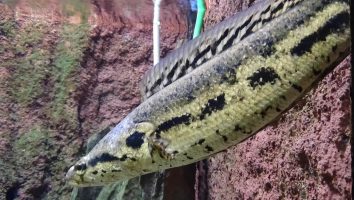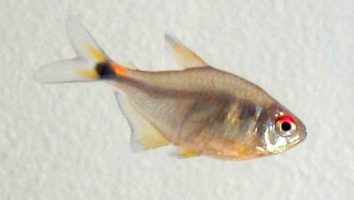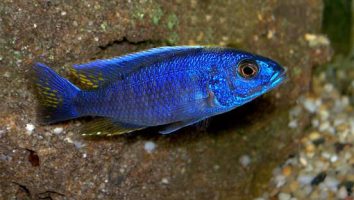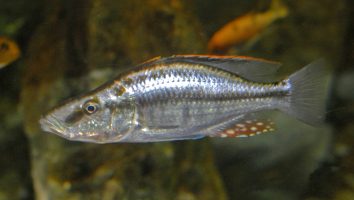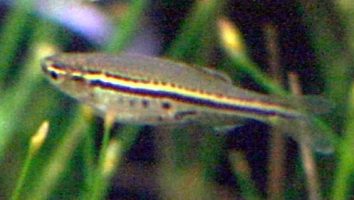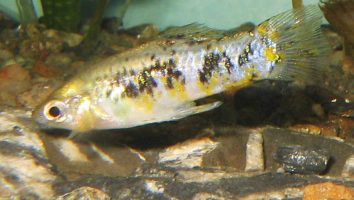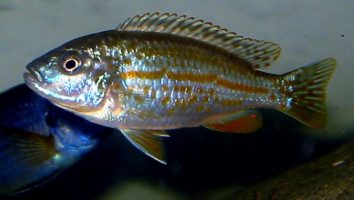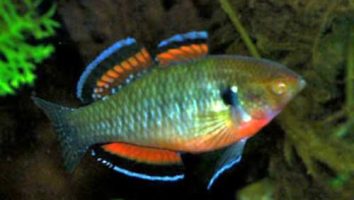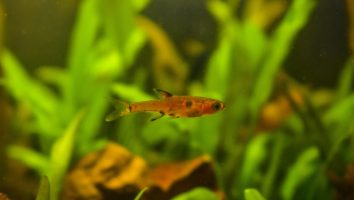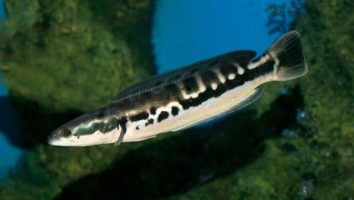Peters’ elephant nose is a freshwater fish that is native to Africa. It is a member of the family Mormyridae, which contains over 200 species of fish. This fish is named for its long, trunk-like nose, which is used to sniff out food and detect electrical fields.
Peters’ elephant nose is a popular fish in the aquarium trade, and is known for its unique appearance and behavior. This fish is not suitable for beginners, as it requires special care and a large tank.
Table of contents
Species overview
Peters’ elephant nose (Gnathonemus petersii) is a freshwater fish that is native to parts of West and Central Africa. It is most commonly found in the Niger and Congo river basins.
This fish prefers slow-moving waters with a lot of vegetation. This is because they are primarily bottom-dwellers that use the plants to help them hide from predators.
Peters’ elephant nose is a nocturnal fish, meaning that it is most active at night. During the day, they will often bury themselves in the sand or mud at the bottom of the river to stay hidden.
This fish gets its name from its long “nose” which is actually an extension of its upper lip. This is used as a sensory organ to help the fish find food in the dark waters where it lives.
Peters’ elephant nose is a popular aquarium fish due to its unique appearance and peaceful nature.
Appearance
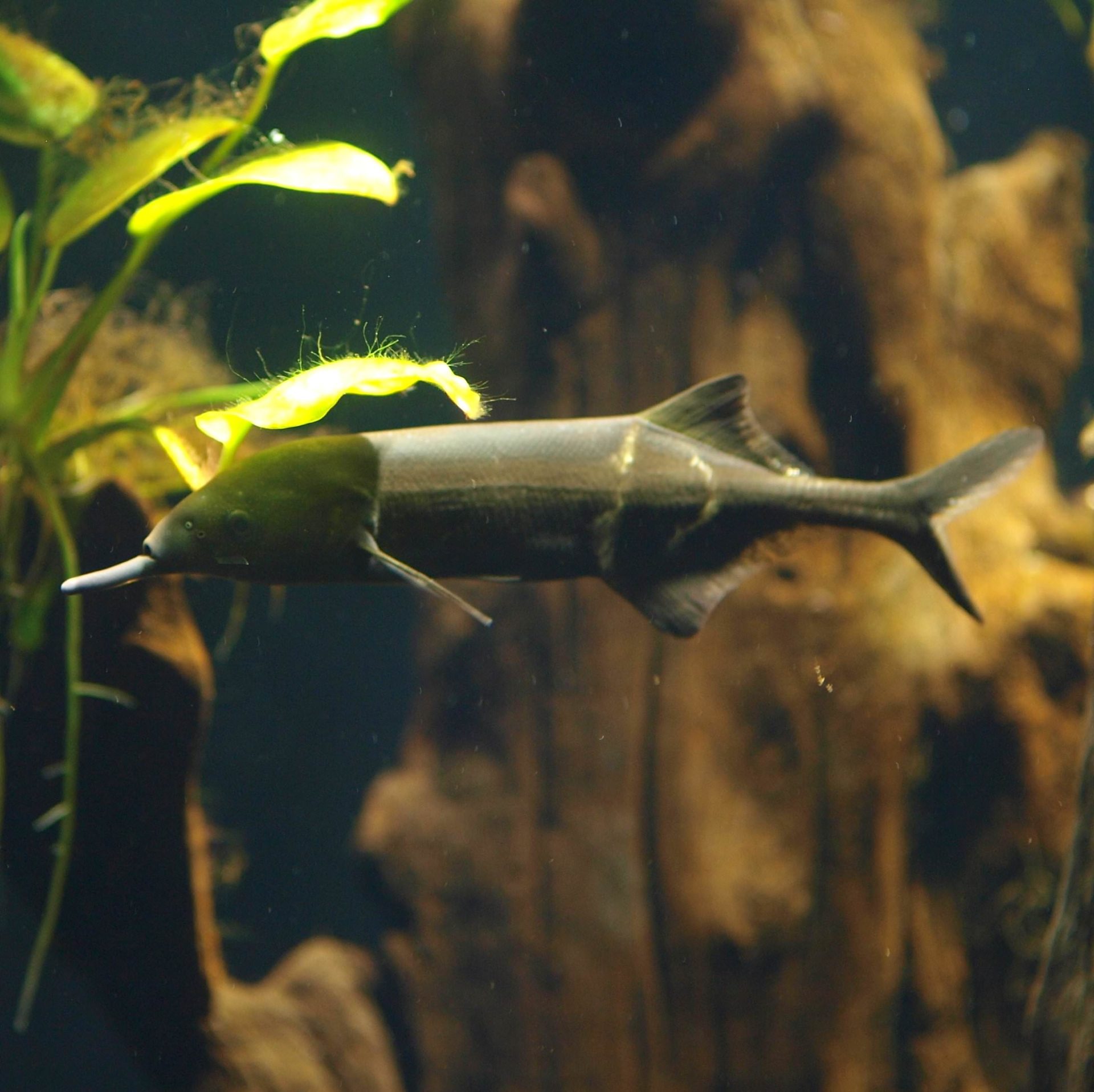
The Peters’ elephant nose is a freshwater fish that is native to Africa. As the name suggests, this fish has a long trunk-like nose.
This trunk is actually an extension of the fish’s upper lip. The Peters’ elephant nose uses this trunk to sniff out food and to communicate with other members of its species.
This fish is brown or black in color, with a white belly. The Peters’ elephant nose has large eyes and long fins.
The Peters’ elephant nose is a peaceful fish that should be kept with other peaceful fish. This fish does best in an aquarium that has plenty of hiding places.
Lifespan
Peters’ elephant nose fish have a lifespan of around 5 to 10 years. As with most fish, their lifespan will depend on the quality of care they receive.
Good water quality, a nutritious diet, and appropriate tank mates are all important factors in ensuring a long and healthy life for your elephant nose fish.
Size
Peters’ elephant nose grow to be about 6-8 inches in length.
Tank
Tank Size
The recommended tank size for a single Peters’ elephant nose fish is 30 gallons. If you want to keep more than one fish, you should add at least another 20 gallons for each additional fish.
Peters’ elephant nose fish are semi-aggressive and can be territorial, so it’s important to provide them with enough space to avoid conflict. They also need a tank with plenty of hiding places and plenty of open space to swim.
Water Parameters
Peters’ elephant nose are native to freshwaters in Africa. In the wild, they inhabit rivers, lakes, and flooded forests.
Peters’ elephant nose are a tropical fish and prefer warm water. They also prefer slightly alkaline water with a pH of 7.0-8.0.
Water hardness is not as critical, but they prefer softer water with a dGH of 5-12.
One of the most important things to remember with Peters’ elephant nose is that they are very sensitive to changes in water parameters. Sudden changes can cause stress and illness.
It’s best to slowly acclimate them to new water conditions. This can be done by slowly adding water from the new tank to their current tank over the course of an hour.
- Water Temperature: 72-82 degrees Fahrenheit
- pH Levels: 7.0-8.0
- Water Hardness: 5-12 dGH
- Alkalinity Levels: 4-8 dKH
What To Put In Their Tank
When it comes to setting up the perfect home for your Peters’ elephant nose, there are a few key things to keep in mind.
First, these fish come from murky waters in the wild. This means that you don’t need to have crystal clear water in their tank. In fact, it’s actually better if you don’t since it will help reduce stress levels.
Next, the substrate should be soft and sandy. This will protect their sensitive noses from getting scratched up.
Last, you’ll want to include some plants and driftwood in their tank. This will provide them with places to hide and feel safe. Java moss is a great choice since it can withstand being nibbled on.
Common Diseases
The Peters’ elephant nose is a robust and hardy fish, but that doesn’t mean they’re immune to illness. There are a few diseases that can affect this species, but the most common one is definitely ich.
Ich is a very common parasite that can become quite serious if it’s not dealt with. The most obvious sign of this disease is the series of white spots that will begin to cover the body of your fish.
There are plenty of other potential diseases that can affect this species as well, but they’re not as common.
Another thing to look out for is infection from cuts. The most common cause of this is keeping your elephant nose in a tank with a rough substrate (or aggressive species that want to fight).
In general, the best way to prevent these fish from getting sick is to maintain the quality of the water in their tank. A tank with clean and stable water conditions always leads to healthier fish who are more resistant to disease.
Behavior & Temperament
Peters’ elephant nose fish are gentle giants. They are some of the largest freshwater aquarium fish, and they have a reputation for being very docile.
Peters’ elephant nose fish are very curious by nature. They are constantly exploring their surroundings and will often approach humans out of curiosity. They are not afraid of people, and they seem to enjoy being around us.
Peters’ elephant nose fish are also very peaceful fish. They get along well with other fish, and they rarely cause any problems. The only time they may become aggressive is if they feel threatened.
Tank Mates
Peters’ elephant nose are a unique and interesting species that can make a great addition to any community tank.
These fish are not aggressive and get along well with most other species.
They are also not picky eaters, so you won’t have to worry about them not getting enough to eat.
Peters’ elephant nose are a peaceful species that do best in a tank with other peaceful fish.
Some good tank mates for Peters’ elephant nose include:
- Neon Tetras
- Guppies
- Platies
- Mollies
- Swordtails
- Corydoras Catfish
Breeding
Peters’ elephant nose are livebearers, so the females will give birth to live young. Breeding them is easy, but it does require a little bit of special care.
To start, you’ll need to set up a breeding tank. It should be at least 20 gallons in size and filled with soft, slightly acidic water. Add some live plants and a few hiding places. Driftwood is a good option.
When ready, add two females for every male. Keep an eye on the females. When they start to swell with eggs, it’s time to remove the males.
The females will give birth to around 20 young at a time. They are born fully-formed and able to swim and feed on their own.
Once the fry are born, you can feed them live foods like baby brine shrimp or microworms. You can also give them crushed-up flake food.
Keep the fry in the breeding tank until they are big enough to be moved to the main tank.
Conclusion
The Peters’ elephant nose is a great fish for beginner aquarists. They are easy to care for and are very peaceful fish. They are also very active fish and will add some excitement to your tank.
If you are looking for a challenge, the Peters’ elephant nose is not the fish for you. But if you are looking for a low maintenance fish that is still fun to watch, then the Peters’ elephant nose is a great choice.

